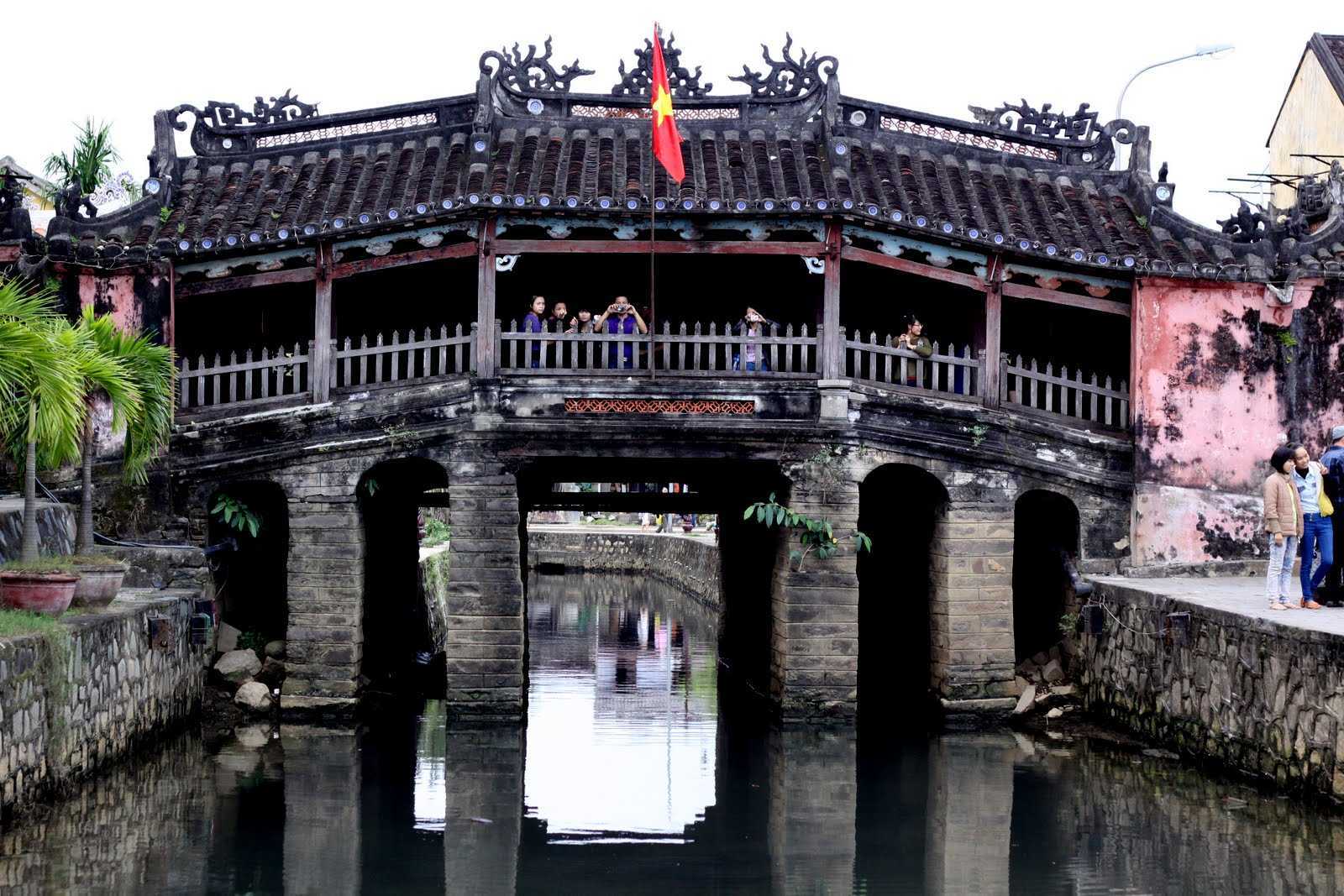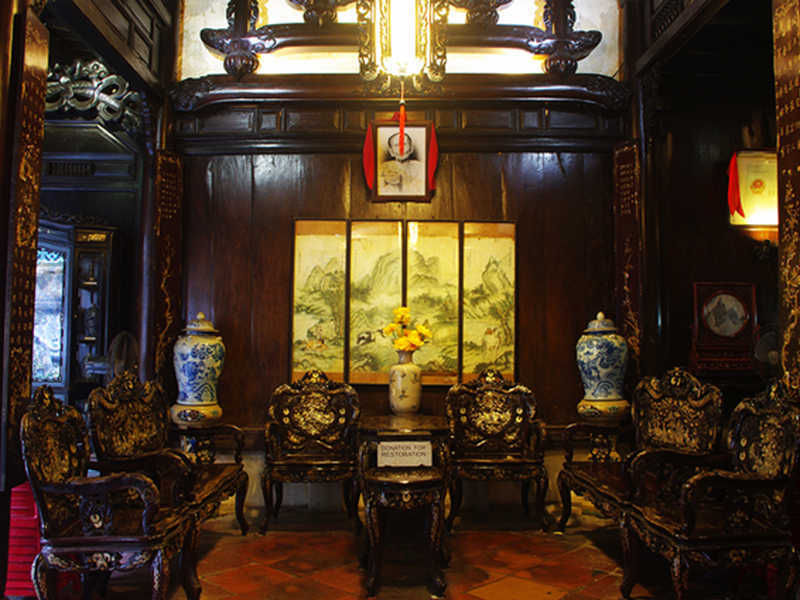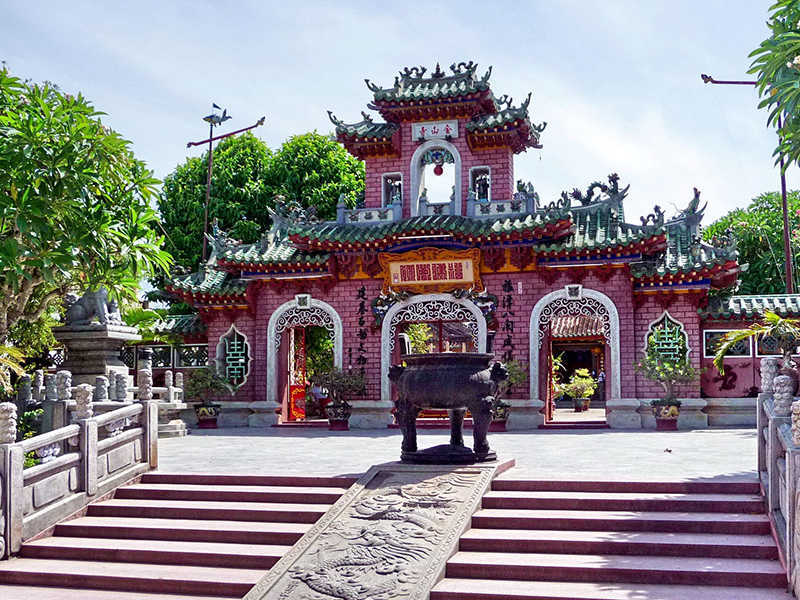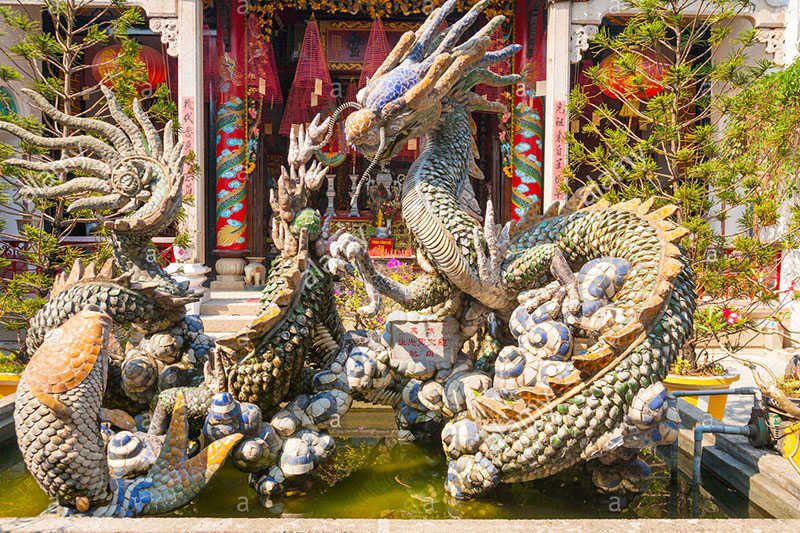Hoi An Ancient Town is an exceptionally well-preserved example of a South-East Asian trading port dating from the 15th to the 19th century. Its buildings and its street plan reflect the influences, both indigenous and foreign, that have combined to produce this unique heritage site. Hoi An was designated a UNESCO World Heritage Site in 1999, and a visit to this old-world gem is a sure cultural highlight of any tour in Vietnam.
JAPANESE BRIDGE
The Japanese Bridge ( Chua Cau in Vietnamese ) is one of the oldest constructions in the Ancient Quarter of Hoian and is also the symbol of Hoian Ancient City. The bridge was originally built by the Japanese and later rebuilt by the Chinese. The bridge is also known as "Lai Vien Kieu", in other words a bridge of friends from faraway countries. At first sight, it resembles pictures from the early Edo period, when Japanese merchants came here to trade for silk and spices. Several hundred Japanese lived here and created a Japanese quarter. Most of the remaining old town was built by the Chinese. This is a typical single-storey house built over 150 years ago. Here triple-layered beams add great character to the building. Successive masters of this house have taken care of it by regularly applying resin to the surface before the beginning of the new Chinese New Year. The house is narrow and long, extending past the inner garden and deep into the rear. These houses are similar to the merchant houses in Kyoto in Japan. The kitchen is at the farthest end of the house.
 TAN KY OLD HOUSE
TAN KY OLD HOUSE
Tan Ky Old House, is a typical example of the shop house form of old Hoian. Nearly 200 years old, the house is still in a good state of preservation. Having many sections joined together by a nice courtyard, the house with an elongated plan connecting the two streets, has many functions: living, worshipping ancestor, welcoming guests, renting and trading. The framework and roof beams of the house show a combination of influence of Vietnamese, Chinese, Japanese architectural styles. Its inside arrangement and decoration give a picture of both the comfortable lives of merchants in the old days and the wonderful talent of the local workmen. The first Hoian civil architectural project to be certified by the Ministry of culture as a “ National treasure of History and Culture,” Tan Ky house has, since the 1980s’, opened its door to welcome thousands of interested domestic and foreign travelers.
 PHUC KIEN ASSEMBLY HALL
PHUC KIEN ASSEMBLY HALL
Phuc Kien Assembly Hall : Constructed up in 1757 by Chinese Phuc Kien merchants at Hoi An, the building has been repaired and renovated many times. Phuc Kien Assembly Hall is used for genies and ancestors worship and a meeting place of the Chinese Phuc Kien people as well. In the main sanctuary, the Thien Hau Holy Mother is worshipped. The rear house is divided into 3 parts, the left one is for the God of fortune, the middle one for the ancestors of Phuc Kien people and the right one for 3 Fatality Queens and 12 Heavenly Midwives. Annual festivities are held every year to honour them, especially important being that dedicated to the 6 ancestors on the 16th of the 2nd lunar month when a great number of Chinese Phuckien people from everywhere in South Vietnam come back for such an important event.
 CANTONESE ASSEMBLY HALL
CANTONESE ASSEMBLY HALL
Cantonese Assembly Hall was built in 1885 by Chinese Cantonese merchants at Hoian to worship genies and for use as a meeting place of their fellow men. The middle of the sanctuary inside is used to worship Quan Thanh De Quan, the Saint who is regarded by the people as a resplendent symbol of morality, loyalty, faith, frankness and righteousness. To its left and right are for Cantonese ancestors and the God of Fortune. Annual practices are held every year in this assembly hall, especially the celebration on the 16th of the 1st lunar month when all the Cantonese living everywhere come in memory of their ancestors.




